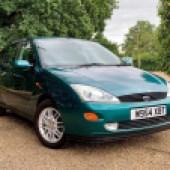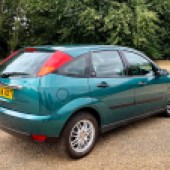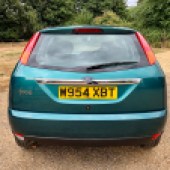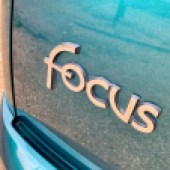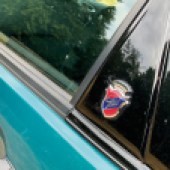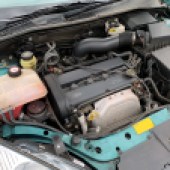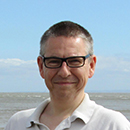Sharp looks and excellent dynamics combined to make the original Ford Focus the family car of choice for enthusiasts. It still impresses today, as long as you bag a good one
Words: Chris Randall
Officially unveiled at the 1998 Geneva Motor Show as the successor to the long-serving Ford Escort, the ‘New Edge’ design by Claude Lobo and John Doughty gave the Ford Focus a sharper, more distinctive look than any of its rivals. Yet the true revelation was how it handled, with an engineering team led by the late Richard Parry-Jones delivering a combination of ride comfort, handling and responsiveness that was unrivalled in its class. Motoring magazines of the era were rightly impressed, with the Focus quickly becoming the benchmark against which all other family cars were measured.
It remains just as impressive today, and a well-kept example is genuinely rewarding to drive. Being a Ford, there was a wide choice of petrol and diesel engines. Petrol options were 16-valve Zetec units, from a modest 1.4-litre producing 74bhp to a brisk 2.0-litre with 129bhp. Aside from the outright RS, those seeking extra performance could choose the ST170, boasting 168bhp along with upgraded brakes and suspension. The 1.8-litre TDdi diesel was economical but produced only 89bhp, later replaced in 2002 by a common-rail TDCi delivering a more useful 115bhp.
That same year also brought a minor facelift, with indicators moving to the headlamps rather than the front bumper as the most obvious change. A wide range of trim levels meant there was something to suit every taste and budget, and by the time the second-generation Focus appeared in 2004, the model had already become a resounding success.
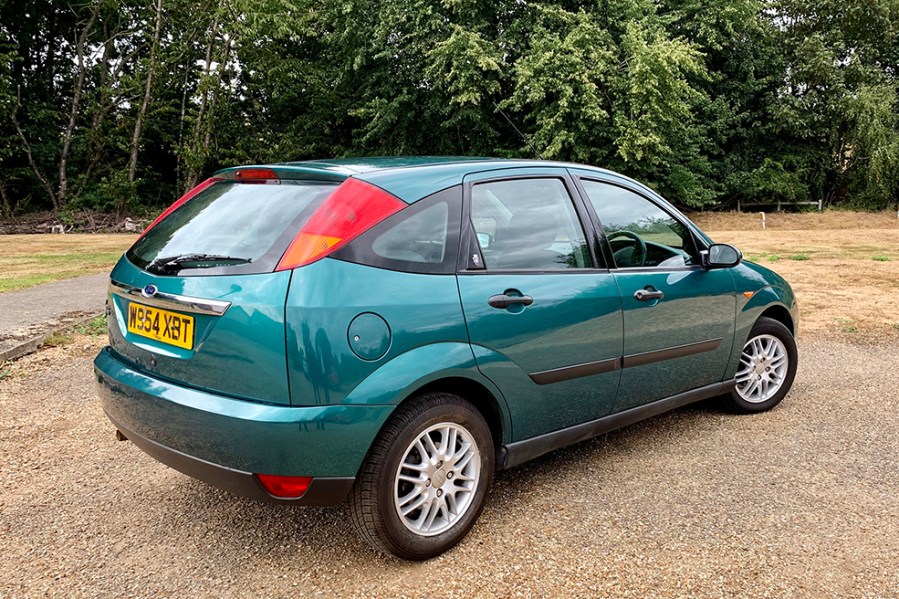
Ford Focus values
The Focus Mk1 has steadily become a classic, with values reflecting condition, mileage and specification. Project cars with rust or child-worn interiors can be found from a few hundred pounds, making them ideal for restoration or modification. Everyday, usable examples in good condition typically range from £2000 to £5000, offering a great blend of ‘old enough to be interesting, new enough to be useable’. The sporting ST170 remains sought-after, with prices starting around £3000 and numbers thinning as many are pillaged for their engines. The halo RS, meanwhile, has become a true collector’s car, commanding north of £25,000 for the best unmodified examples.
Insurance Costs
2003 Ford Focus ST170, value: £3500
Example quote: £295.00 or £313.00 with Agreed Value.
Quotation supplied by Lancaster Insurance. Tel: 01480 400761
Quote based on a 45-year-old marketing manager, access to another car, no claims or convictions, club member, 3000 miles per year, no modifications, living in SP2 0HL. Disclaimer: Subject to underwriting criteria. An additional charge may be payable. Authorised and regulated by the Financial Conduct Authority.
Bodywork
Rust is a genuine concern, and with professional repairs unlikely to be cost-effective we’d recommend a thorough inspection. It can affect all the usual areas such as sills, door bottoms and wheelarches (especially at the rear), but you should also check the tailgate around the wiper and hinges. The front and rear screen surrounds, along with the metalwork around the door mirrors, are other common trouble spots. Catch it early and DIY repairs may be enough, but if the corrosion is more serious, tracking down a cleaner example is the financially wiser choice.
For the remainder of the bodywork, it’s a matter of looking out for the usual scuffs, scrapes and dents, and ensuring bumpers, light units and mirrors are intact. Headlight covers can go cloudy, though they can be restored if the damage isn’t too severe. Thanks to the vast number of cars sold in the UK, second-hand parts are plentiful, so focus (ahem…) on finding a fundamentally sound car rather than fretting over minor cosmetic issues.
Whether you favour a hatchback, saloon or estate version of the Focus comes down to personal preference, but the hatchback was by far the most common and is easier to source today, while arguably also showing off the sharpest styling. The saloon, by contrast, is comparatively rare.
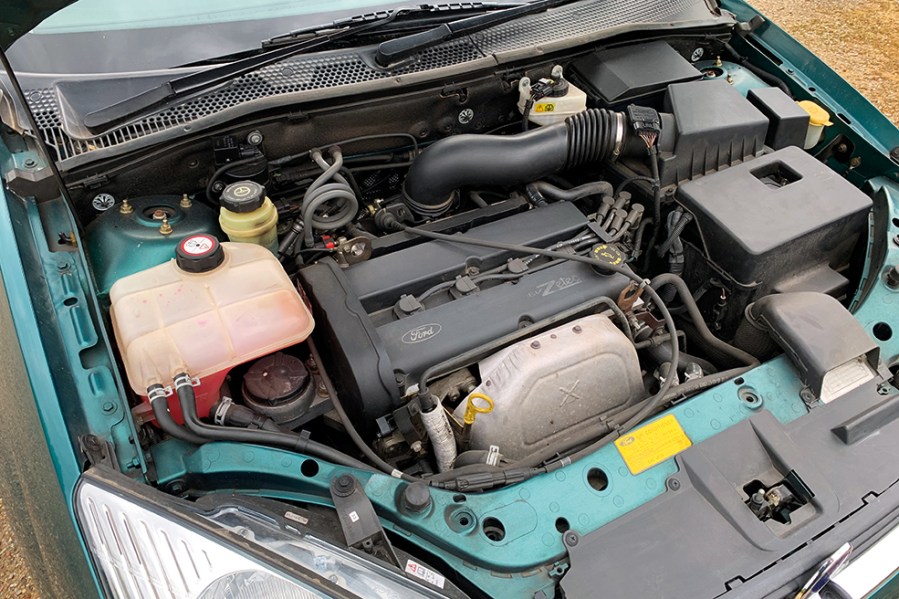
Engine and transmission
Even the newest Mk1 Focus is now over 20 years old, so the main concern is making sure maintenance hasn’t been forgotten. Petrol engines will easily cover high mileages if properly looked after, so check for a history of regular oil and filter changes and evidence of cam belt replacement; Ford recommends changing it every 10 years or 100,000 miles, but in practice half that interval is far more sensible today. Replacing the belt is a DIY-friendly job, with a kit including tensioners and pulleys costing around £100, plus £45 for the water pump, which is wise to renew at the same time.
Beyond routine upkeep, inspect for excessive exhaust smoke, oil or coolant leaks, and any signs of overheating that could have damaged the head gasket. Rough running or a lumpy idle might be due to failing fuel injectors (around £40 each), a dirty or dead idle air control valve (IACV) or engine management sensors, while brittle vacuum hoses can also cause issues. Misfires are often a coil pack on its way out, though replacements aren’t costly. Keep an eye on warning lights for catalytic converter problems, and if the engine cuts out, it could be a faulty camshaft position sensor or gearbox speed sensor.
Petrol engines remain the best choice today, particularly in 1.6- and 1.8-litre forms, but if you must have a diesel Focus, aim for the later TDCi. Even then, the fuel system needs to be in top condition; early examples suffered premature wear of the high-pressure pump, and even a reconditioned unit costs upwards of £300. A diesel showing smoke or a lack of performance is rarely worth the risk or expense.
On the transmission front, most cars came with a five-speed manual (six-speed on the ST170), and a test drive will quickly reveal whines, rumbles or crunches that suggest a hard life; replacement manuals are relatively easy to source. Clutches generally last around 70,000 miles, with a kit costing about £80. The alternative was a four-speed automatic, which is uncommon today but not inherently problematic – just make sure the shifts are smooth.
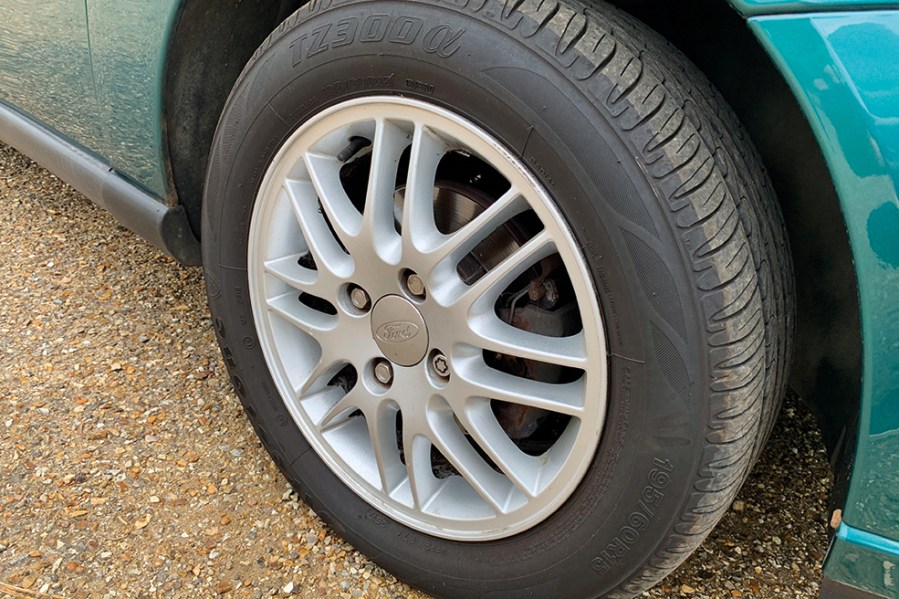
Suspension, steering and brakes
The suspension featured MacPherson struts up front and an ingenious ‘Control Blade’ setup at the rear, with careful tuning giving the Focus a delightful balance of ride comfort and handling. That’s what makes it so enjoyable to drive even today, so it’s worth budgeting for a thorough overhaul to restore that as-new feel. If you can carry out the work yourself, replacing worn ball joints and bushes is relatively inexpensive, and the same goes for dampers and coil springs – though you should be prepared to deal with a few rusty bolts. New front struts cost around £50, with coil springs £30, and it’s best to use good-quality components.
The brakes are straightforward, so it’s mainly a case of checking for worn pads and discs, seized calipers, and corroded pipework. Replacement parts are cheap, but if the car has ABS, ensure the warning light illuminates and extinguishes correctly on start-up.
When it comes to steering, watch out for wear in the rack and associated joints, as well as fluid leaks from the power-steering system. It’s also worth listening for the hum of worn wheel bearings – estate models seem particularly prone – but replacements are only about £20 each. Finally, inspect the alloy wheels for damage or corrosion, and check for cheap, worn tyres, which can indicate penny-pinching previous owners.
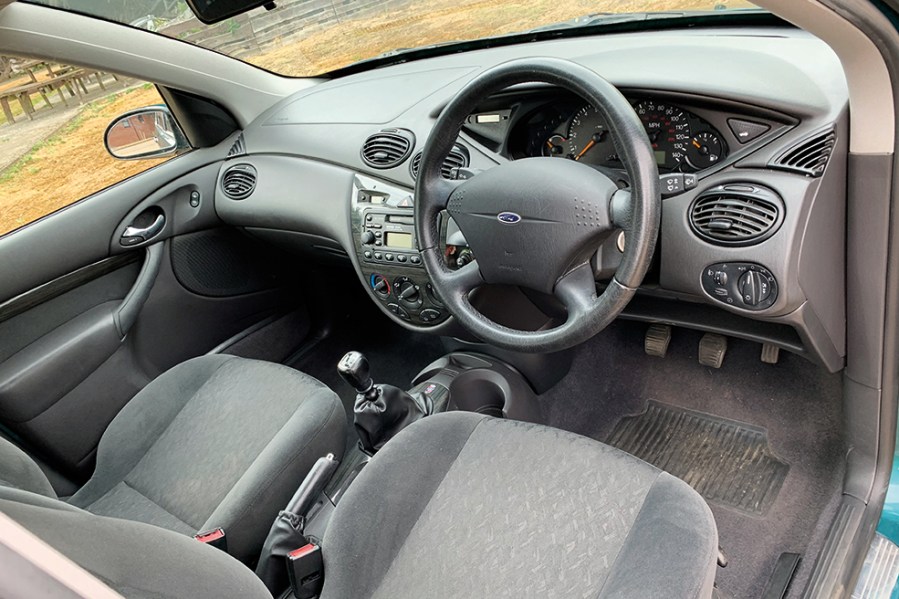
Interior and trim
While the cabin wouldn’t exactly be described as luxurious (perhaps aside from Ghia models), buyers of a new Ford Focus would have had few complaints regarding build quality and materials. Unsurprisingly, things are likely to be less refined today, so it’s important to avoid examples where the interior has clearly suffered from years of wear. Damage to seat trim, carpets and plastics will be obvious, but if the bodywork and mechanicals are sound, refreshing the interior with second-hand trim is a sensible option. It’s also worth checking for water ingress: an incorrectly fitted pollen filter can lead to soaked footwells, while leaking rear light clusters can damage the units themselves and allow water into the boot.
Even more crucial is making sure all the electrics function correctly, so check everything. Faulty central locking and electric windows are often caused by water reaching control units or broken wiring between the doors and body. Other specific items to focus on include failure of the windscreen or rear window heating elements, a non-working internal boot release, and a faulty heater resistor. Air conditioning that still blows cold is an added bonus. The instrument cluster can fail too, though specialist repair costs less than £100, and a non-functioning speedometer may be due to a failed gearbox speed sensor – the part is inexpensive, but replacement can be fiddly. It’s also worth ensuring that tailgate electrics operate correctly, as the wiring between the body and hatch can break. All of these issues are fixable, but a car with multiple electrical problems will certainly test your patience.
Ford Focus Mk1: our verdict
The Ford Focus still manages to impress: its keen handling and excellent engines have stood the test of time, and it remains genuinely enjoyable to drive. The car continues to be a superb choice for family use, and thanks to its popularity when new, there’s a healthy supply of examples across all ages. We’d favour a rarer, early-production example. As the purest expression of Ford’s New Edge design, the Mk1 Focus is also most likely to appreciate in value as the years go by.
Model Timeline
1998
Ford Focus launched at the Paris Motor Show, replacing the Escort with hatchback, estate, and saloon options.
1999
Wins European Car of the Year award.
2001
Minor facelift updates interior trim, adds new engine options. 2.0-litre Zetec-powered ST170 ‘warm hatch’ introduced.
2002
Focus RS debuts in Europe with 2.0-litre turbocharged engine, 215hp, bodykit, OZ Racing wheels and extensive suspension and brake upgrades.
2004
Mk1 production ends in Europe as the Focus Mk2 is unveiled, though some markets continue limited production.


